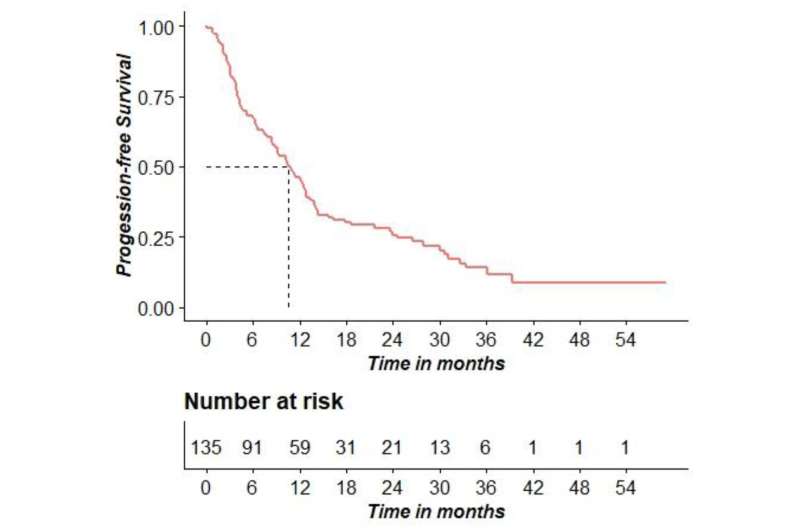Second line trastuzumab emtansine following horizontal dual blockade

A new study published in Oncotarget reports that despite relevant medical advancements, metastatic breast cancer remains an incurable disease.
HER2 signaling conditions tumor behavior and treatment strategies of HER2 expressing breast cancer. Cancer treatment guidelines uniformly identify dual blockade with pertuzumab and trastuzumab plus a taxane as best first line and trastuzumab emtansine as a preferred second-line choice. However, there is no prospectively designed available study focusing on the sequence and outcomes of patients treated with T-DM1 following the triplet.
In the study, data concerning a wide series of patients treated in a real-life setting are presented. Results obtained in terms of response and median progression-free survival suggests a significant role for T-DM1 in disease control of metastatic HER2 expressing breast cancer.
Dr. Salvatore Del Prete from the Medical Oncology Unit of San Giovanni di Dio Hospital said, "From the 1980s, Human Epidermal Growth Factor Receptor 2 (HER2) signaling was increasingly recognized as pivotal in tumor growth of HER2-expressing breast cancer. HER2 expression is limited to a proportion (15-20%) of breast cancer patients; however, HER2 conditions tumor behavior and addresses treatment strategies."
Currently available guidelines in metastatic HER2 positive breast cancer involve a sequence of treatment with first-line double blockade with trastuzumab plus pertuzumab and a taxane, according to Cleopatra trial results, and second-line treatment with trastuzumab emtansine enforced by Emilia trial results, followed by lapatinib plus capecitabine.
The reduced toxicity of T-DM1 in the second and later lines of treatment together and the high rates of activity and efficacy are determinant in choosing treatment for a patient candidate to a prolonged time on treatment.
On February 22, 2013, the Food and Drug Administration approved T-DM1 for use as a single agent in the treatment of patients with HER2-positive metastatic breast cancer who previously received trastuzumab and a taxane. Such results induced the FDA on May 3, 2019, to approve T-DM1 for the adjuvant treatment of patients with HER2-positive early breast cancer treated with neoadjuvant taxane and trastuzumab-based treatment and having a residual invasive disease in the breast or axilla at the surgery .
In the present study, data coming from different centers concerning patients with HER2 positive metastatic breast cancer treated with second-line T-DM1 following trastuzumab and pertuzumab were collected and evaluated.
The Del Prete/Montella Research Team concluded in their Oncotarget research article that despite the increased rate of survival of metastatic breast cancer patients overall, a rate of patients is lost at any line of therapy. In two different studies concerning patients series treated predominantly before 2010, 3% and 26% of patients reached the goal of third-line treatment. This evidence underscores the need to give patients the best treatment as early as possible.
The available evidence is substantially in favor of the choice of T-DM1 in the treatment of HER2 breast cancer at second and later lines.
More information: Salvatore Del Prete et al, Second line trastuzumab emtansine following horizontal dual blockade in a real-life setting, Oncotarget (2020). DOI: 10.18632/oncotarget.27603















